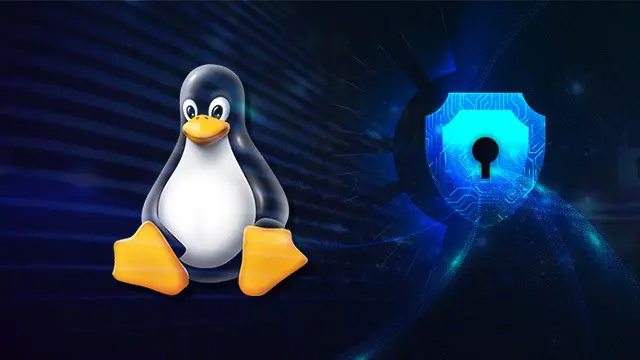
Linux Security for Beginners
Eduonix Learning Solutions Pvt Ltd
The complete program to learn the fundamentals of Linux Security from ground up.
Add to basket or enquire
Overview
Certificates
Reed Courses Certificate of Completion
Digital certificate - Included
Will be downloadable when all lectures have been completed.
Curriculum
-
Introduction to Linux Security 02:45
-
X.509 Certificates and Public Key Infrastructures 53:03
-
X.509 Certificates for Encryption, Signing and Authentication 49:04
-
Encrypted File Systems 48:44
-
DNS and Cryptography 51:12
-
Host Hardening 44:04
-
Host Intrusion Detection 39:45
-
Resource Control 33:00
-
Discretionary Access Control 19:21
-
Mandatory Access Control 43:21
-
Network Security 40:41
-
Network Intrusion Detection 23:12
-
Packet Filtering 26:05
-
Virtual Private Networks 19:31
Course media
Description
Major Topics Covered
-
Introduction to Linux Security
-
X.509 Certificates and Public Key Infrastructures
-
X.509 Certificates for Encryption, Signing, and Authentication
-
Encrypted File Systems
-
DNS and Cryptography
-
Host Hardening
-
Host Intrusion Detection
-
Resource Control
-
Discretionary Access Control
-
Mandatory Access Control
-
Network Security
-
Network Intrusion Detection
-
Packet Filtering
-
Virtual Private Networks
Why should you take this course?
This course will give you in-depth information on Linux security and tools that can be effectively used to create safe and reliable web apps. Linux is an open-source that can be used with multiple security tools and techs. If you're going to start your journey to be a Security Specialist this is the course you should go for.
-
Expert-curated course material
-
In-depth sessions of Linux essentials
-
Security experts as instructors
Who is this course for?
Any one who wants to learn Linux security will find this course very useful
Requirements
Basic knowledge of Linux is required for completing the course
Questions and answers
Currently there are no Q&As for this course. Be the first to ask a question.
Reviews
Currently there are no reviews for this course. Be the first to leave a review.
Sidebar navigation
Legal information
This course is advertised on Reed.co.uk by the Course Provider, whose terms and conditions apply. Purchases are made directly from the Course Provider, and as such, content and materials are supplied by the Course Provider directly. Reed is acting as agent and not reseller in relation to this course. Reed's only responsibility is to facilitate your payment for the course. It is your responsibility to review and agree to the Course Provider's terms and conditions and satisfy yourself as to the suitability of the course you intend to purchase. Reed will not have any responsibility for the content of the course and/or associated materials.


